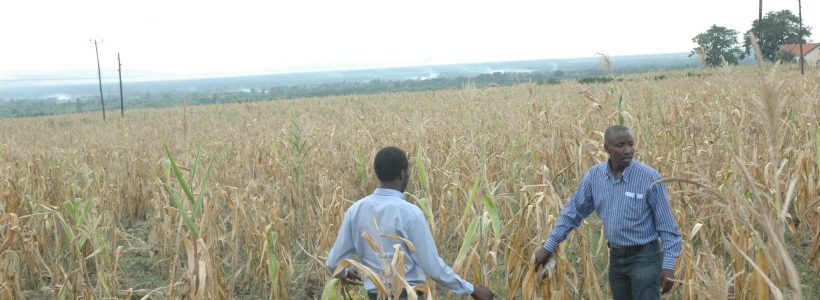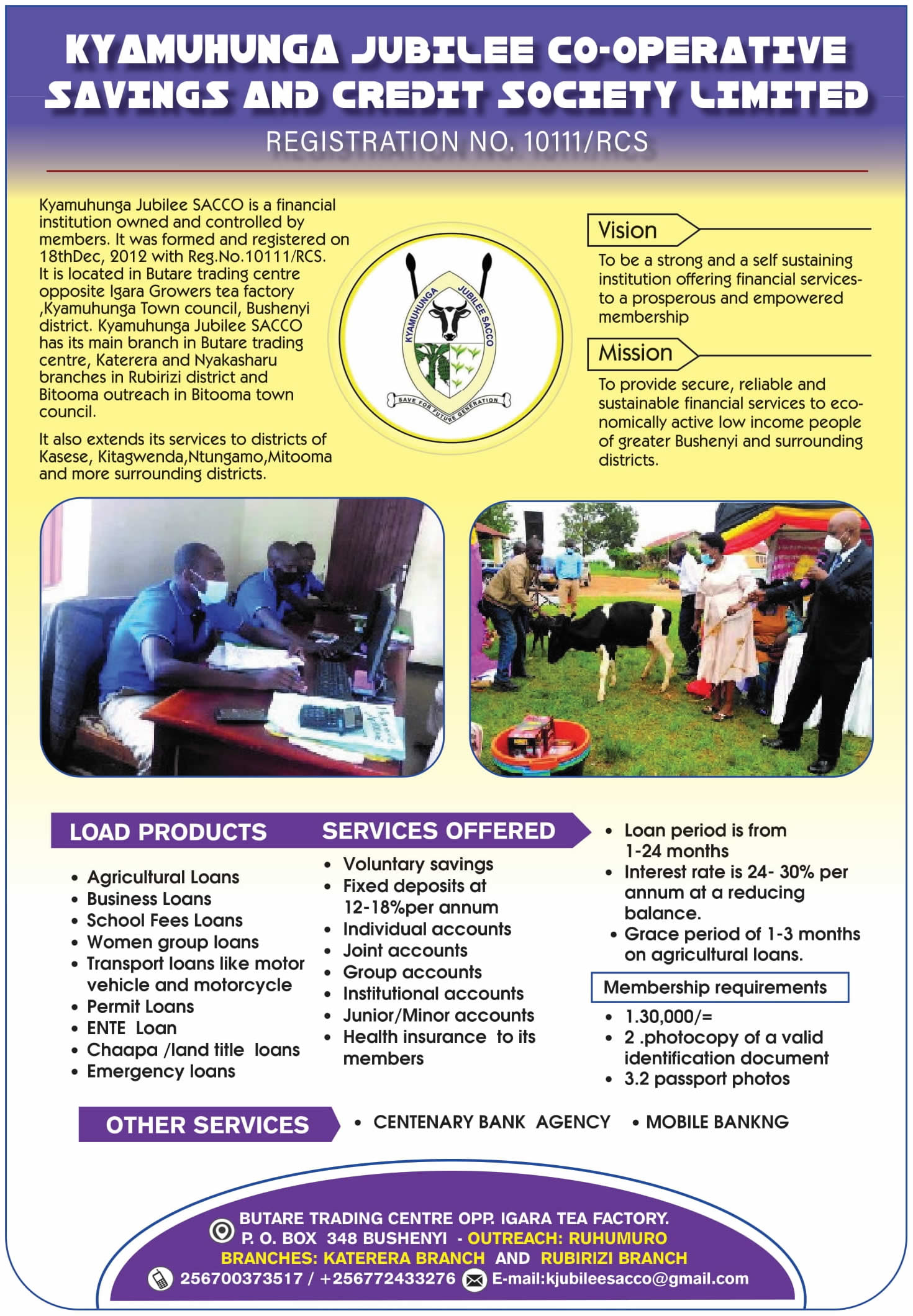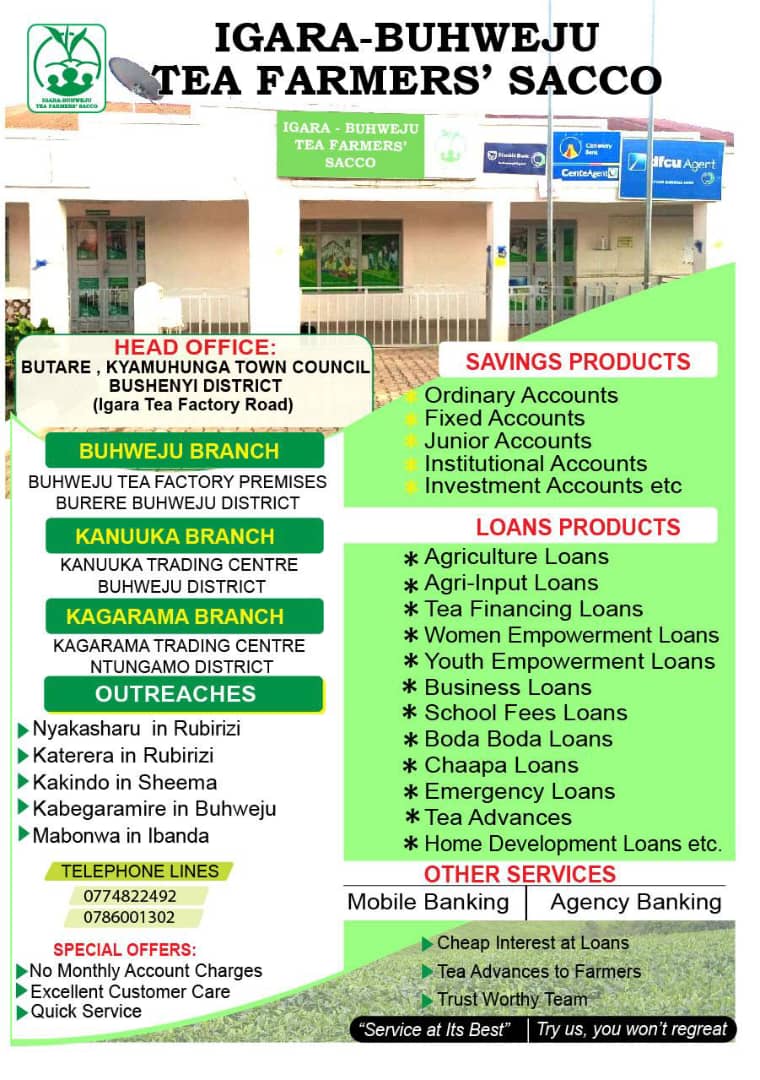DISEASES, DRY SPELL, AFFECT MAIZE PRODUCTION IN RWENZORI
By Wilson Asiimwe
In Kasese–
Agricultural experts in the Rwenzori sub region are in fear over the
looming famine following anticipated poor maize yields in the region.
Kabarole, Kasese, Kamwenge, Kyenjojo, Kyegegwa and Bunyangabu are majorly known for maize production, each district produces between 80,000 to 100,000 tons of maize per season according to the records at the respective production offices.
However several farmers are in loses following the drop in production due to the prolonged dry spell which hit the region at the end of last year.
Jacob Magara; a farmer in Rugendara in Kitswamba sub-county Kasese district said that he invested over 10 million shillings in the cultivation and preparation of 20 acres of maize but only harvested 100 kilograms.
“Am already in loses all my maize dried in the garden due to the prolonged drought I can’t even get half of the money which I injected in the farm,” Magara said.
Magara said that the loss will not only affect the farmers but also the
business community, especially maize processors and seed companies. He also anticipates high food prices due to the low yields.
Bwambale Fred, the manager Rugendabara maize millers association, one of the leading processors in Kasese said that the scarcity is already being felt. He said his company is only able to buy an average of 50kgs of maize a day, compared to the four tons bought daily during the normal harvesting season.
Bwambale even farmers who have the old stock fail to preserve it and it is therefore of poor quality. The price per kilogram has risen from 600 to 800 shillings.
“Many farmers are suffering loses and the little maize that was produced is also being exported to areas of South Sudan, Eastern Congo, Rwanda and Kenya and that has led to the increase in the cost of a kilogram of maize flour from 1200 to 2400 in the recent,” Bwambale said.
In Kamwenge the production of maize is severely under threat from a fast spreading maize disease known as Maize Lethal Necrosis Diseases.
Some of the affected farmers in the sub counties of Nkoma, Bwizi and
Nyambani said that the disease has been ravaging the areas since 2016.
Maize production in the district has since dropped by over 40 percent as a result of an outbreak of the disastrous virus disease that has ravaged the district.
“Several farmers have started abandoning the growing of maize because of the disease and maize is the main food crop and source of income for the people,” said Mwebembezi Joseph a farmer in Nkoma sub- County.
Maize Lethal Necrosis Disease is mainly spread by a vector, transmitting
the disease from plant to plant and field to field. Affected maize is
identified as having progressively yellowing leaves and stems with rotting cobs and in some cases, stunted plant growth.
Dr. Mugisha Richard an agriculturalist in Mubuku, Kasese district said all of the maize varieties grown in several parts of the Rwenzori region are susceptible to the disease.
“The only solution of eliminating maize lethal necrosis disease is to
develop resistant varieties otherwise many farmers are going to suffer
loses,” Mugisha said.
Uganda is still conducting confined field trials on maize in Kasese,
Namulonge in Wakiso and Serere districts as the country waits for the
passing of the Biosafety and Biotechnology law.
Source: www.mknewslink.com; a western Uganda news website.
Email: wmuhwezi75gmail.com
Tel:+256702680106.
































 Views Today : 105
Views Today : 105 Views Yesterday : 411
Views Yesterday : 411 Views Last 7 days : 3082
Views Last 7 days : 3082 Views This Month : 10354
Views This Month : 10354 Total views : 1447958
Total views : 1447958 Who's Online : 2
Who's Online : 2 Your IP Address : 3.147.73.117
Your IP Address : 3.147.73.117